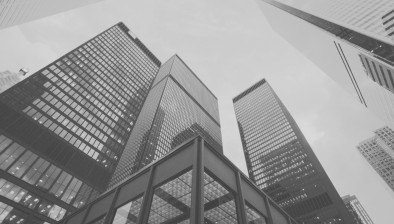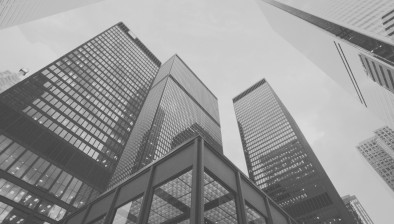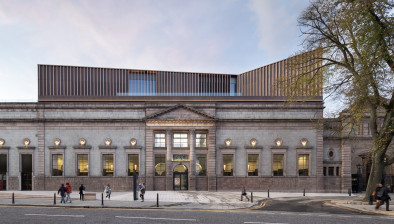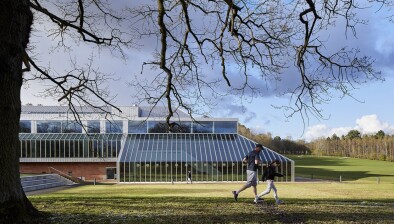Sutherland Hussey Harris’ Chinese project nears completion
 Scottish architectural firm Sutherland Hussey Harris (SHH) is putting the finishing touches to one of the largest new cultural buildings in China.
Scottish architectural firm Sutherland Hussey Harris (SHH) is putting the finishing touches to one of the largest new cultural buildings in China.
The Times reports how the Edinburgh firm won a competition to build the City Museum of Chengdu in 2007, and has survived earthquakes and political upheaval to bring the project to fruition. The huge 70,000 square metre building is scheduled to open in November in the heart of the capital of Sichuan province.
The museum presents an extraordinary sight, its copper-mesh façade extending along the western edge of Tianfu square, dominating the most important space in the city.
SHH says the £240 million museum “will include exhibition space for natural history, history and folk, and Chinese shadow play as well as a large area for temporary exhibition”.
It adds: “The new city museum will be the most important cultural building in Chengdu and needs to assert itself on the Tianfu square against a backdrop of ever-increasing commercial development. The proposal includes the creation of two pedestrian routes through the site – one taking people from the southwest corner of the site to the centre of the square, the other taking people from the northwest corner of the site to the centre of the square.”
It has already had a remarkable history. In 2008 Chengdu was 100 miles from the epicentre of a catastrophic earthquake, which had a magnitude of 7.9. An estimated 80,000 people died in the province, among them thousands of children in Chengdu, who were killed when concrete school buildings, put up in the 1950s, collapsed around them.
“People went to prison because of those collapsed buildings,” said Charlie Sutherland, a partner in SHH. “There is an understandable paranoia about earthquakes.”
The response of the architects and their Chinese engineers was to create a building which can withstand an earthquake of up to 8.0 magnitude. Above ground it extends over five floors to a height of 42m (138ft), and below ground four floors sink down 25m, the structure suspended on shock absorbers.
The scale of the challenge is in marked contrast to a project in SHH’s home city. A proposed wooden shed on allotments in the prosperous Stockbridge area was pilloried by some local residents for “destroying” Georgian vistas.
There are no such difficulties in Chengdu. The museum is a symbol of a city which has reinvented itself over the past ten years as a centre of China’s high-tech industries.
Politics can, however, be challenging. Some of the Chengdu regime who had commissioned the museum were jailed when Xi Jinping came to power in China in 2013. The new president would go on to make clear his distaste for the “weird buildings” of the Beijing Olympics.
Mr Sutherland said: “When we won the competition the edict from on high was ‘You must have a western collaborator’ — there was a notion of international links. That has been totally reversed by the current regime. Culturally they have turned inward.”
Curators are now beginning to fit out the museum, though SHH’s four-person team remain in control of the interior design. “We are quite surprised and proud at the quality they have managed to achieve,” Mr Sutherland said. “And externally, the building is 99 per cent complete. It just needs a good clean.”





















